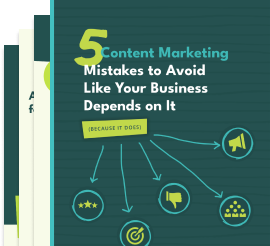The other day, I came across a Facebook post by Social Media Today that caught my eye. It was an infographic that contained insights from 22 million business posts on social media in 2020. There was one metric in particular that caught my eye—brand engagement.
In a nutshell, the study Social Media Today quoted analyzed millions of Twitter, Facebook, and Instagram posts, across 35 different industries, and the results were pretty depressing.
Here are the brand engagement averages, across all industries, from the study:
- Facebook – 0.26%
- Instagram – 1.16%
- Twitter – 0.07%
I should note that these percentages are the average engagement rate per post, by followers.
It hurt my heart seeing those low percentages.
I know first-hand how hard us marketers work and how much time and effort goes into writing a headline—let alone coming up with an entire marketing campaign.
All that work with such little reward.
It’s disheartening to say the least, but it’s not all bad news because it doesn’t have to be this way.
What if I said you could beat your own industry average on Instagram and increase it by 52%? Would that make you happy?
How about on Twitter? The study, in bold letters, stated that “Twitter is almost dead for all industries.” However, I beg to differ. What if there was a way to beat the Twitter benchmark and increase brand engagement by 800%…would you be interested?
Oh. Facebook is your platform of choice? Cool. What if I told you that there’s a way to beat the brand engagement benchmark on Facebook and increase it by 1,615%? Am I speaking your language yet?
Because that’s exactly what we did for one of our clients and I’m going to tell you how we did it.
Stats at a Glance for Our Client (Services Industry):
- Instagram Avg: 0.76%
- Our Average: 1.02%
- % of Difference: + 52%
- Twitter Avg: 0.02%
- Our Average: 0.18%
- % of Difference: + 800%
- Facebook Avg: 0.13%
- Our Average: 2.23%
- % of Difference: + 1,615%
How to Not Increase Brand Engagement
But first, let’s explore the root cause of low brand engagement.
Low engagement is the result of publishing content that sucks…
Now, when I talk about content that sucks, what do I mean? I mean:
- Relying on curated content and borrowing authority from other brands.
- Using stock images and memes to round out your content calendar
- Publishing the same content, in the same format, on every channel.
- Leveraging arbitrary holidays that have nothing to do with your brand. Things like National Donut Day or Hobbit Day.
Said another way, I mean content that isn’t platform native, that isn’t authentic or authoritative, that isn’t on message, and that doesn’t provide value to the people who see it.
Seriously…Hobbit Day? Just stop.
If your content isn’t platform native, if it’s not authentic & authoritative, if it isn’t on message, and it doesn’t provide value…it sucks.
The 3-Step Plan to Increase Engagement
Step One: Strategically Originate
We partnered with the thought leaders and subject matter experts at our client to create strategic marketing initiatives that would generate robust source content. Often, this looked like webinars, video podcasts, and pre-recorded presentations.
This step is important because all the content that gets originated here is going to be the rocket fuel for your content engine. So, you have to ensure that you’re setting out on these initiatives knowing that you want to make more stuff from this one thing that you’re creating today.
Step Two: Opportunistically Amplify
Typically, we’d take all of this source content and go live with it or premiere it on Facebook (We’d go live on LinkedIn, too, but that platform wasn’t in the study, so kind of irrelevant here). We did this to ensure that we were juicing the algorithms and getting seen more often in more feeds.
Of course, we did all the promotion that goes along with these kinds of virtual events across all the platforms our client was on. That’s to be expected, but what we did after the virtual events had taken place is where the magic happens.
We were able to take that content that we helped to originate and amplify it into weeks of content. Sometimes even months of content.
We sliced and diced all that source material into quote posts, short one to three-minute clips for Facebook and Instagram, longer seven to ten-minute clips for YouTube and LinkedIn, we wrote net new blog posts, we developed entire nurture streams, and wrote white papers…. all from the same source material.
You name it, we created it, and tailored it to the platforms we published it on. That means we paid attention to image sizes, we leveraged best practices for each platform when it came to copywriting. Nothing was a template. Nothing was cross posted in the same format.
So, what might take an hour of the content creators’ time yielded tons of useful things that were original, on message, tailored to the platform it was seen on, and authoritative because it all came from source material that involved a subject matter expert.
Step Three: Relentlessly Measure & Optimize
Every good marketer knows you got to measure everything, right? This one is no brainer. We publish, we wait, we analyze and look for areas to improve and learn from our mistakes. What didn’t work, we pivoted away from immediately. What did work, we leaned into.
Trying and failing in an attention economy isn’t the worst thing to happen to anyone, so we experimented, learned on the fly, made some mistakes, but ultimately were able to crush the industry averages in the area of brand engagement.
And we did it in a super-niche market with a B2B service as the core offering.

